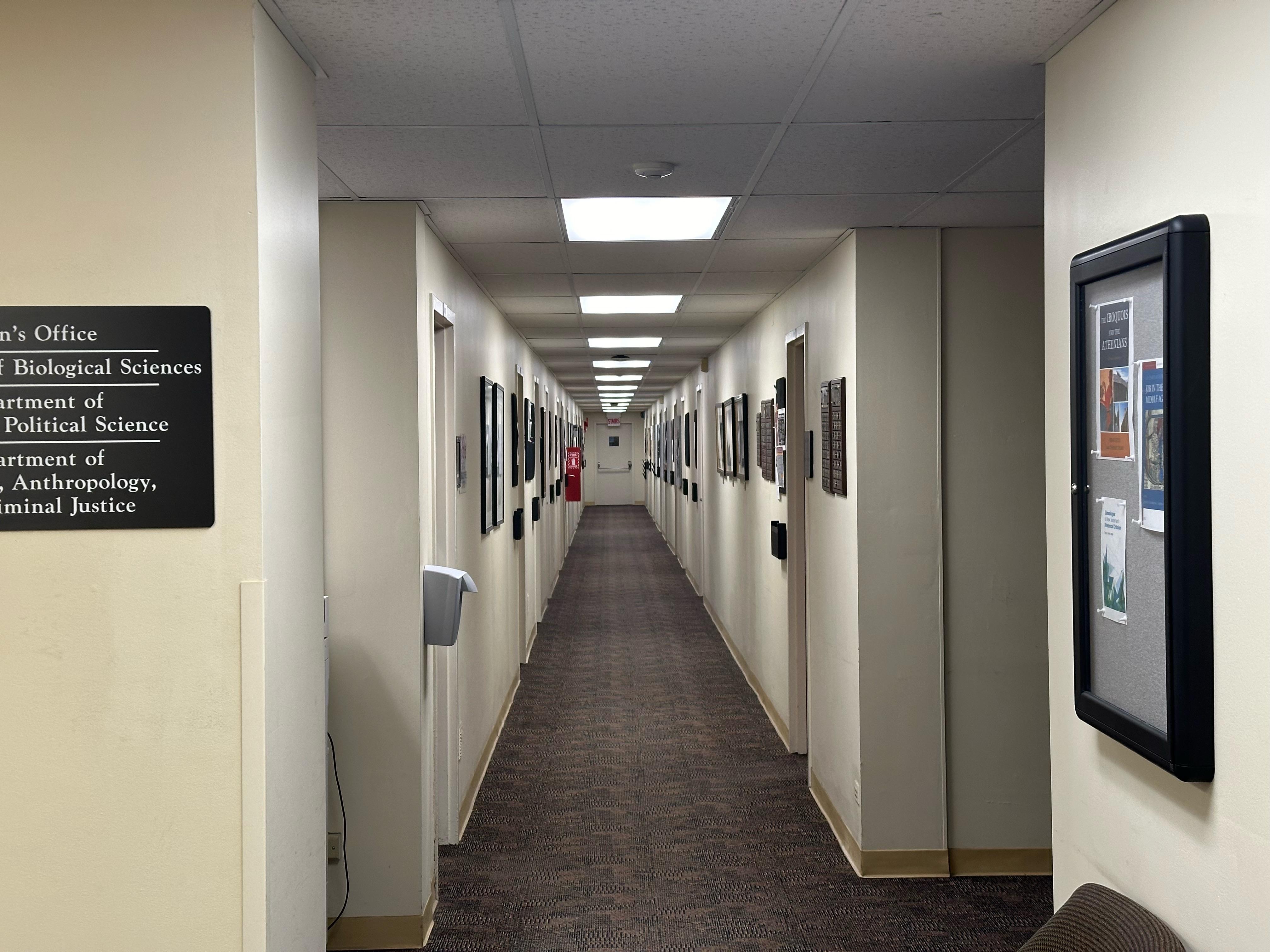2nd Floor Faculty Offices The Xavierite
With midterms quickly approaching, it’s more important than ever for students and faculty to maintain an open line of communication.
Whether it’s to clear up confusion or further elaborate on lecture points, professors can be a valuable resource for students during exam season, but the connections forged can potentially run much deeper.
Saint Xavier University prides itself on being a welcoming, community-based institution, but do students feel this way about their school? The editorial board discussed whether or not those values hold true in regard to student-professor relationships.
One issue students seem to have lately is they can’t have all of their questions answered within the school day. There’s only so much time in a given class to thoroughly cover educational material, but not all professors are always available to stay behind and offer extra help.
One editorial board member attested that “it depends on if they [professors] have a class right after or need to be somewhere.” This sentiment was echoed by another board member who specified that the issue was prevalent “in previous semesters[…], but they were available during their office hours or over email.”
The board unanimously agreed that professors are generally most available via email, but there’s still no guarantee that help will be provided promptly. As one board member states, “sometimes they just take too long to reply.”
Other board members have had more positive experiences emailing their professors, one assuring that “They respond super quickly and they are always willing to help.”
To have more meaningful or personal conversations, students have the option to visit their professors in their offices. However, many editorial board members recall their last visit with a professor being a mandatory meeting.
One board member expressed appreciation for mandatory in-person meetings due to the direct feedback a student can receive from their professor. “It’s beneficial because I can show them what I have so far, and then find out what I need to improve on or change,” they elaborated.
If it isn’t required, however, many students typically won’t have one-on-one meetings.
“I have never visited a professor’s office,” one board member admitted. They continued by saying they see the upside of meeting professors in person despite not experiencing it firsthand.
Students don’t visit faculty offices for a variety of reasons. Most professors host office hours, but students generally don’t remember when they’re free or where they’re located.
Even if they know where to find the office hallways, different problems arise. If a student pops by, even during designated office hours, there’s no way to immediately tell whether the professor is present or if they’re with another student.
One board member explained, “If professors were consistently in their offices, I would have been more inclined to go to office hours. But every time I go to faculty offices, the hallways are eerily silent and doors are closed. It unintentionally shuts students out.”
It’s perfectly understandable for professors to want privacy in their offices or want to focus on their work, but having doors open when possible should be the norm to ensure that students feel comfortable approaching for help.
One board member noticed a recent disconnect between students and faculty. As they see it, “Some students don’t seem to want to put in extra time and some professors don’t follow through with their office hour availability.” They continued, “These two things clash fairly easily.”
Everyone on the editorial board agreed that meeting professors in person can offer many benefits.
“It allows you to become comfortable around people,” noted one board member. “Body language is a huge part of communication, and you lose that virtually,” they added.
“It’s so much easier to communicate questions and concerns over assignments with professors,” said another member.
A third member continued, “When you meet with a professor in-person, you are able to connect with them in a way that just email interactions and class does not allow for.”
While it seems obvious that seeking one-on-one help from a professor can help academically, meeting in person can also allow students to build real relationships with the faculty.
Leaving doors open so that students can stop by for casual conversations as well as feedback on specific assignments is the key to turning mere professors into mentors.
If students feel truly welcome to visit faculty offices, it can lead to more significant engagement, retention, and bonds that transcend the classroom.
Students may need to take the first step and ask for assistance, but professors need to make sure that their efforts don’t fall on deaf ears and closed doors.

